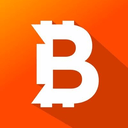
Review on Peercoin by Nikolay Sadonin

Peercoin is a technological innovation in its field.
By implementing its own Proof-of-Stake method, Peercoin seeks to address the inefficiencies of the Proof-of-Work system, which is used by bitcoin and many other currencies to validate transactions. It makes use of a combination of both systems, namely, Proof-of-Work and Proof-of-Stake, to achieve its goal. Peercoin was a technological pioneer when it was originally launched, and it was the first cryptocurrency to abandon conventional mining methods for solving hashes in favor of its own designed Proof-of-Stake mechanism, which was introduced in 2013.
Peercoin features an asset creation and exchange system known as PeerAssets, which allows users to create and trade assets. PeerAssets makes it simple to tokenize any kind of blockchain with ease. What distinguishes PeerAssets from its competitors is its efficient transaction compression, which frees up the majority of the available space on the blockchain while also making it very cost-effective. It is advantageous to run the asset on the Peercoin blockchain since it provides benefits such as protocol-defined transactions, security, and maintainability.
It is the goal of Indicium, a Decentralized Autonomous Company project built on top of the PeerAsset protocol, to generate, trade, and exchange cryptocurrency indexes. Indicum also intends to use its own token, Indicium, to provide investors with a share in the DAC, dividend payment, and voting rights in board elections. The community is also working on a project called Peerbox, which is currently under development. To put it another way, Peerbox is an operating system for the Peercoin Blockchain that can be installed on Raspberry Pi devices, allowing users to stake their currencies on the network.
Peercoin seeks to achieve long-term energy efficiency by using both Proof-of-Work and Proof-of-Stake mining techniques. Peercoin aspires to achieve a mining level of zero for the Proof-of-Work model and then completely transition to the Full Proof-of-Work model. Instead than using a variable transaction model like other currencies, Peercoin uses a mechanism for calculating transaction fees that has been specified by the protocol. The reward for Bitcoin mining is constantly fluctuating depending on a variety of variables, while the reward for Peercoin mining is consistently decreasing over time. The steady decrease in value of the model enables the transition from Proof-of-Work to Proof-of-Stake very simple. Peercoin's Proof-of-Stake methodology makes use of a well-known concept known as coinage to achieve its results.
Peercoin has gone through many difficult periods, with many devs leaving and joining in the meantime, yet the coin has managed to survive each and every one of these periods. As shown by the number of GitHub contributions, the team is working on a variety of platform-related projects and is developing very actively. The coin also has a high number of trades on cryptocurrency exchanges. Since the introduction of Peercoin, a slew of other cryptocurrencies have sprung up on the market, each boasting superior technology. It is currently following the market trends in the same way that all other cryptocurrencies are, and it would be prudent for you to wait a little longer for the market to calm down.
- It has a high level of long-term renewable energy.
- It employs a hybrid of the PoW and PoS models.
- It makes use of the same encryption technique as Bitcoin to protect its data.
- There is no upper limit on the number of coins you may earn.
- None.













